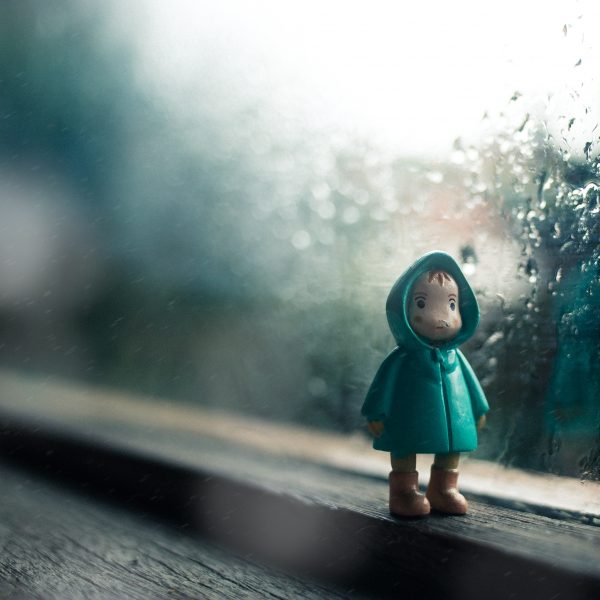The use of pedagogical documentation technology – PhD reflections

Mary Elizabeth Picher is currently completing her dissertation on the use of pedagogical documentation technology in a Kindergarten program, using the vehicle of StoryPark, a platform familiar to many in the Australian early childhood education and care (ECEC) context.
The Sector spoke with Ms Picher recently to explore her research, seeking to gain insights applicable to the Australian context.
Interviewee: Mary Elizabeth Picher, Doctoral Candidate at the University of Toronto, Ontario Institute for Studies in Education.
Date: 13.08.19
Topic: documentation, pedagogy, research
Freya: Thanks for speaking with us Mary Elizabeth. The main focus on your work centres on the rise of digital documentation in ECEC, which is becoming more common place in the US and Canada, as it is in Australia and elsewhere in the world. Do you feel this is reflective of a move of more and more services to a digital and paperless environment, or is there something more specific at play in ECEC?
Mary Elizabeth: Involving families in early learning settings has always been a huge part of ECEC, as has understanding and supporting children’s learning through pedagogical documentation and reflection.
However with the growing financial pressures on most modern day families we are more often seeing both parents working and families moving away from their own family support network.
This means it can be difficult for educators to engage with families in the short amount of time at pick up and drop off, and that connecting with the people that matter most to children is very difficult based on time and geographic constraints.
Educators are constantly seeking ways to deepen and improve outcomes for children but are also subject to huge time pressures themselves so digital tools make sense to help overcome these challenges.
Freya: New Zealand has been fairly proactive in the exploration of meaningful documentation, especially with practitioners such as Wendy Lee sharing so freely her work around learning stories. I noted with interest the independent studies around e-portfolios in ECEC had all come from NZ. Why do you think that is? What is it about NZ that makes them world leaders in this space?
Mary Elizabeth: The development of Te Whariki was ground-breaking in ECEC. Along with this curriculum, the advent of the learning story as a way of assessing and supporting children’s learning has been very influential. Other countries such as Canada have incorporated many of these ideas into their early learning frameworks, but they are still behind in terms of implementing them into practice.
Because educators in NZ have been mandated to document in their teaching practices for some time, it was natural for practitioners to look for technology solutions to help them with the documentation and planning process. As NZ was one of the first countries to develop e-portfolios for ECEC, it also became one of the first countries to study their use.
Freya: Thanks Mary Elizabeth. I’m wondering, can you tell us more about the Canadian ECEC landscape? What are the similarities and differences to the Australian context? What are some of your observations through the work you undertook, which would be replicable here?
Mary Elizabeth: I think one of the main differences between the Canadian ECEC landscape and the Australian context is that Australia has developed a National Early Childhood Curriculum Framework (the EYLF) and a National Quality Framework.
In contrast, Canada has relied on individual provinces (states and territories) to develop their own early learning frameworks and quality assurance measures, some of which are mandated and some of which are not.
However, many of the ideas embedded in these documents are similar and often align with those outlined in Australia’s early learning documents. For example, both Australia and the Canadian provinces understand child development to occur within the context of relationships, regard parents as partners in early childhood education and use play as the primary means to support the learning and development of young children.
Another similarity is the advocacy role educators and organisations are playing in helping the wider community understand the value and importance of ECEC as it seems in most countries ECEC is under funded and public perception does not fully appreciate the long-term impact of the work.
Freya: Your research had a focus on how pedagogical documentation strengthened the relationship between home and care, creating a broader learning community for the child. Was the strong use of visuals in the space (photos and videos) something which supported parents with low literacy and/or English as an additional language, to have more meaningful conversations with the ECEC service?
Mary Elizabeth: At the outset of my study, many of the kindergarten classrooms I studied relied on email or paper newsletters to communicate with parents. For this reason, parents did not have a very good understanding of what their child was learning about at school or even what their child’s classroom looked like.
After Storypark was introduced into the learning environment, parents received visual pictures of their child’s learning on a regular basis with links to local curriculum and narratives describing the learning. Having a snapshot of what their child did during the day gave parents a window into their child’s learning and development. This increased transparency not only helped parents to have more meaningful conversations with their child’s educators, but also with their child. This was especially true for low literacy families and for parents who spoke English as an additional language.
Freya: I was delighted to read of the child voice in your research, with consultations happening with the kindergarten children being followed in the work. What were some of their insights and observations?
Mary Elizabeth: I had the opportunity to interview 33 four and five-year-old children about their experiences with Storypark. Through these conversations, three major themes stood out.
First, children told me that Storypark helped them to remember their learning.
Second, children told me that Storypark helped them to talk about their learning with their educators and parents.
And lastly, children told me that Storypark helped them feel proud of their learning.
Generally speaking, the children loved having their work documented by their educators and shared with their parents. It was incredibly rewarding for them.
Freya: You spoke about the way that relationships between educators and parents, and educators and children, were improved through using StoryPark. Can you expand on that? What were the improvements, and how did/do they link with StoryPark?
Mary Elizabeth: Storypark gave educators a means to celebrate and show appreciation for their students’ learning. It also increased and expanded the conversations that children had with their educators about their learning.
Furthermore, Storypark provided parents with a better understanding of what their child learned about during the day. In turn, parents developed a deeper understanding and appreciation for what the educators did to support their child’s learning. This was evident in the comments parents made in response to educators’ learning stories.
Finally, Storypark supported the relationship between parents and their child. It gave parents a jumping off point to have a better conversation with their child after school. Instead of asking their child about his/her day and hearing nothing, parents were able to ask more specific questions because they saw their child’s learning posted on Storypark.
Freya: Finally, what were some of your key “take away” moments of insight from your work on this project? What did you learn that surprised or delighted you?
Mary Elizabeth: Originally, I was only going to interview educators, parents and principals for my thesis project. Because the students in my study were not going to be using the technology directly, I did not think it was going to be necessary to interview them. However, after interviewing educators and parents about how Storypark impacted them and their relationships to the children, it became clear that I needed to interview the students themselves.
In conducting the student interviews I was blown away by the direct impact that educators and parents’ use of Storypark had on the students. Because of the positive reinforcement the children received from having their learning documented, shared and discussed, Storypark not only helped the children to remember their learning; it also served as a catalyst for further learning.
Freya: Great! Thank you for walking us through your work Mary Elizabeth.
Mary Elizabeth: You’re welcome.
To learn more about Ms Picher’s work, please see here.
Popular

Policy
Practice
Provider
Quality
Research
Workforce
Beyond the headlines: celebrating educators and the power of positive relationships in early learning
2025-07-07 10:00:24
by Fiona Alston

Workforce
Policy
Quality
Practice
Provider
Research
ECEC must change now, our children can’t wait for another inquiry
2025-07-02 07:47:14
by Fiona Alston

Workforce
Quality
Practice
Provider
Research
Beyond the finish line: Championing child protection one marathon at a time
2025-07-08 09:15:32
by Fiona Alston













